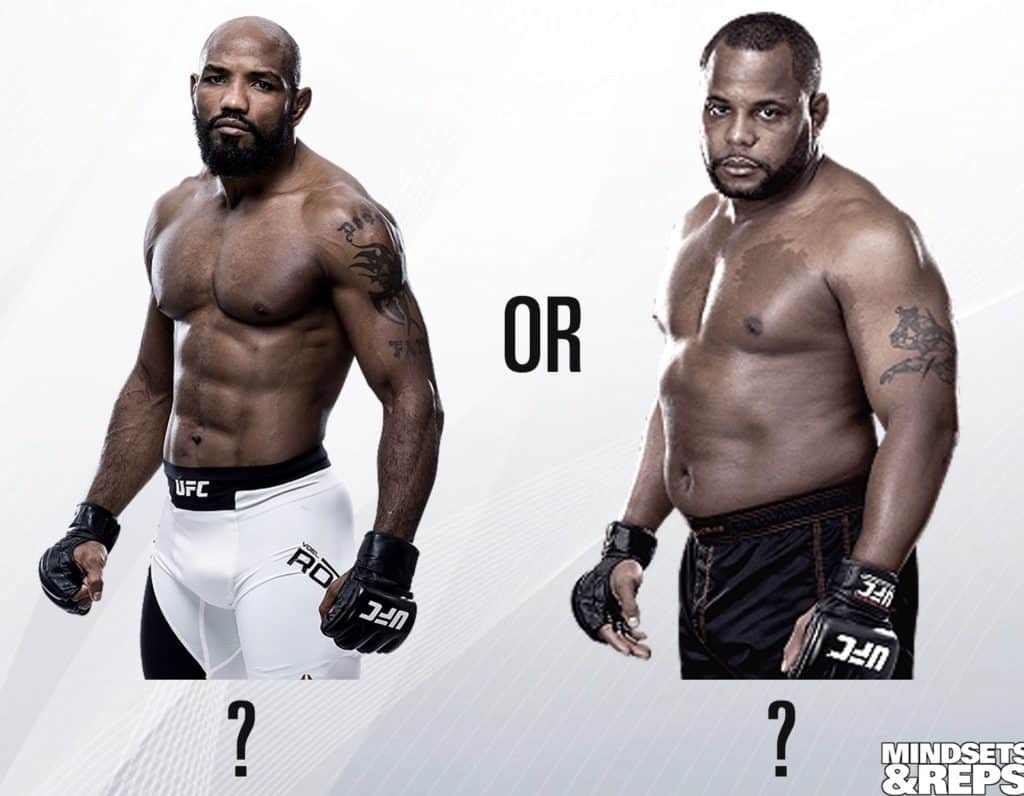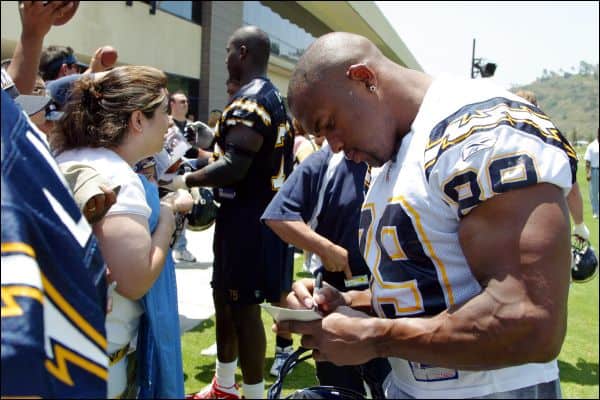
In this picture are two of the best fighters in the world. They’re both about 40 years old and fight only one or two weight classes apart (in fact they were rumored to fight each other at light heavyweight at one point).
Yoel Romero has a physique any man would kill to have. Eight pack abs and muscle bound, but he’s no stiff either. He’s remarkably athletic and was a silver medalist in wrestling at the Olympics. Many argue that he defeated Robert Whittaker in their middleweight title fight years ago.
Daniel Cormier’s physique leaves… a bit to be desired. He’s kind of fat, let’s just be honest. But the man was a two division world champion and is considered one of the best of all time. He had great endurance for a fighter who competes in a higher weight class coupled with the ability to toss anyone around with his elite wrestling talents.
So we have two polar opposites from a physique perspective, yet both are successful fighters. Which is the way to go? As with anything, the answer depends on the person. Guys with physiques like Yoel Romero, Kevin Lee, and Paulo Costa likely don’t do a ton of hypertrophy/bodybuilding style exercise. Genetically they just put on muscle quite easily. And I don’t believe hypertrophy work should be shied away from in sports; there is a benefit to having lean muscle.
Even if you’re training for strength, adding muscle is a natural byproduct. It’s hard to be strong and not put on some muscle. Hell, if you’re doing bodyweight training you’re still going to add a little muscle, especially if you’re genetically inclined.
But of course there is a point of diminishing returns. There was an NFL receiver named David Boston who put on a ton of muscle at one point in his career which led to injury and a severe drop-off in his performance. He dealt with foot and knee issues due to the extra mass on his body.

In fitness circles there is a phenomenon called body weight set point theory. It states that each one of us has a weight range that we naturally fall in. For me this is anywhere from 180-190lbs. Anything outside of this range and things just look and feel “off.” I’m either too heavy and lose athleticism or too light and flat.
The interesting thing is; it’s very hard to get out of this range. I’m writing this post holiday season after eating god knows how many calories, yet this morning I was 190.5lbs. I’m telling you, this is after eating junk all day every day for a couple weeks! Listen, if I continued this pattern then I would certainly start to creep past 190, but the point is to illustrate that our bodies want to stay in this 5-10lb range.
What drives me crazy is when I see guys like Conor McGregor and Georges St. Pierre go up in weight class and try to pound away meal after meal so that they can match their opponent in size. In the process, they are sacrificing performance because they are now competing at an unnatural weight.
Performance should never be sacrificed for size. Think about it: would you rather be the same weight as your opponent and feel sluggish or be 10-15 lbs lighter while remaining at your athletic peak?
Frankie Edgar won the lightweight title competing against bigger opponents because he had elite endurance and technical ability. He never tried to put on 20 unnecessary pounds so he could stand toe-to-toe with a guy like Benson Henderson.
Desean Jackson and Robby Anderson never tried to add mass because it would take away from their best asset, speed.
Kevin Durant couldn’t bench press 185 at the NBA combine and was thin as a rail, but he’s on his way to a hall of fame career.
The best body type for performance is the one that an athlete naturally falls into. As young athletes enter their 20’s and 30’s, their frame typically fills out a bit more. That type of physique change is the natural progression of the athlete.
With the exception of offensive and defensive linemen, it’s usually irresponsible to try and take an athlete outside of their body weight set point.
